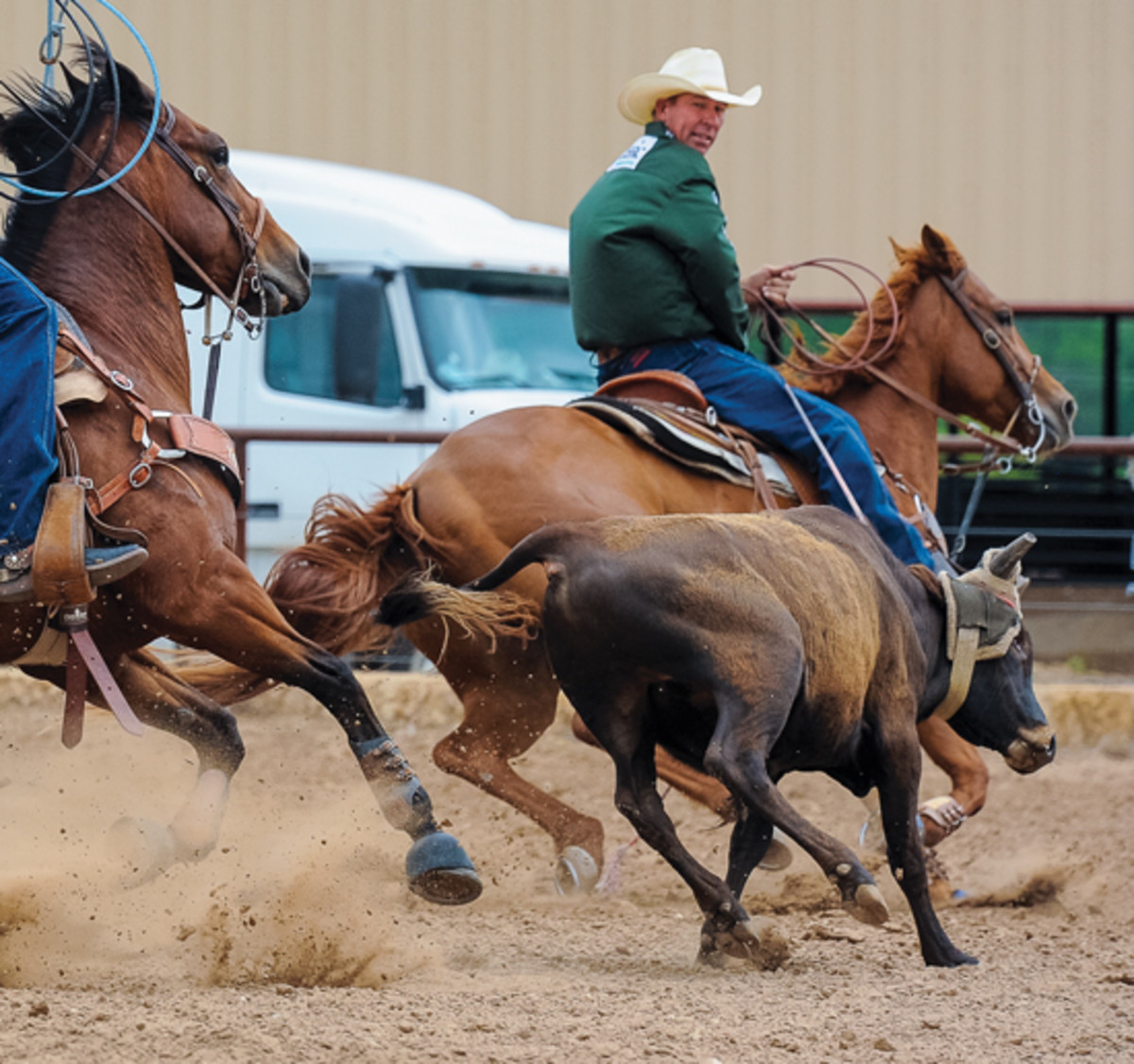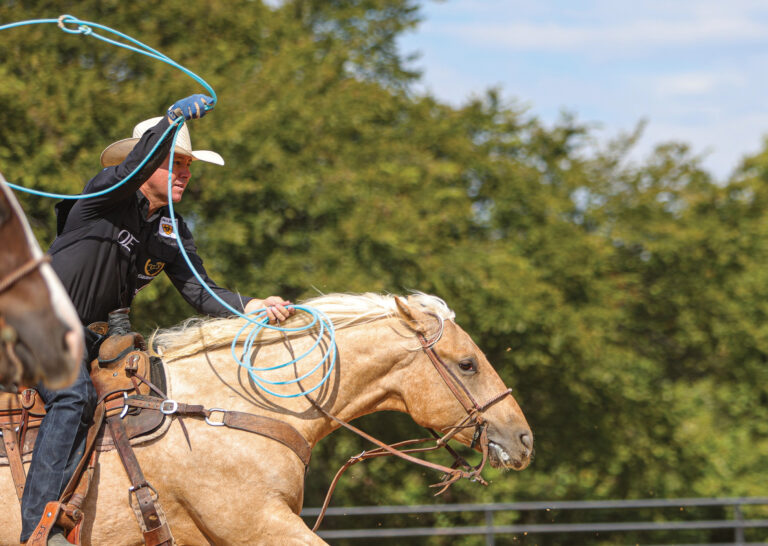The head horse and the steer dictate the handle a lot of times, but there are variations. There is an art to reading and handling cattle, so the more experience you have roping different types of cattle and learning to control your horse the better. There are basically three types of handles for steers of different speeds—steers that run really hard, medium steers and the steers that don’t run much. And there are variations to every one of those. There’s also the variation of what type of run you’re trying to make, whether you’re roping in an average or you’re trying to make a rodeo run. If you’re trying to win a round, you don’t have a lot of time to worry about making a perfect handle. There’s less time for finesse on your handles when you’re trying to make fast runs.

You’re going to have to chase a steer that runs really hard down the arena. You need control over your horse, so you can slow him down and handle him for your heeler. Most of the time what causes a steer to run up the rope is the head horse leaking out in the turn or ducking off, versus using his hind end to slow the steer down. There’s a lot of speed built up, so those steers tend to come up the rope pretty fast.
If you have a steer that wants to run up the rope, a lot of people try to push out in front of them even more to keep the rope tight. But if the steer’s running up the rope, he’s hopping, and what the heeler’s looking for is a hop. Stay out in front of him and try to block him off from going in behind the head horse. Don’t slow up, or the steer will go around and windmill, which makes it hard for the heeler to catch up. When a steer runs up the rope, the worst thing you can do is turn left. It makes the steer swing to the outside and go faster.
On a medium running steer you just want to bump him, get his head turned and push out in front of him. You can set a steer like that up faster, because the steer doesn’t have as much life and you don’t have to stay in the hole as long.
The medium steer is what most people rope and handle the best, because a lot of them almost handle themselves. The fast and slow steers are a lot harder to handle. The perfect handle on a medium steer comes from controlling your head horse. You and your horse both read the play, your horse doesn’t stay in the hole too long, and he doesn’t duck out of there. The steer just rolls around there nice and easy. The smoother the corner, the easier for your heeler to read the play and the faster he can rope them.
Slow steers are the most dreaded for novice ropers, because they aren’t ready to rope when they get there. They get there too quick and their horses get chargy, which can turn a 6-second steer into a 10-second steer. They end up being too tight, and spending time backing their head horse off. A lot of lower-numbered ropers prefer a medium or faster steer, because they think that speed helps them stay aggressive because they have to hustle more. A lot of them slow their aggressiveness down to match the steer and don’t swing very hard. It doesn’t matter if you have a slow or fast steer—you have to stay aggressive with your riding and roping.
If you give a pro guy a slow steer, he’s going to be licking his chops, because he’s going to be ready when he gets there. You have to get your swing going right out of the box, so you’re ready to rope when you get there. Experienced ropers know not to let their horse overrun a slow steer. You need to be ready to rope quicker, and there won’t be as much set because you need to keep that momentum going to keep things going smoothly through the corner. If you set in the corner on a slow steer, he’ll come out of there shuffling or trotting. So you want your position more over to the left on a slow steer, and you want a lot of rope speed, so you’re ready to rope when you get there.










